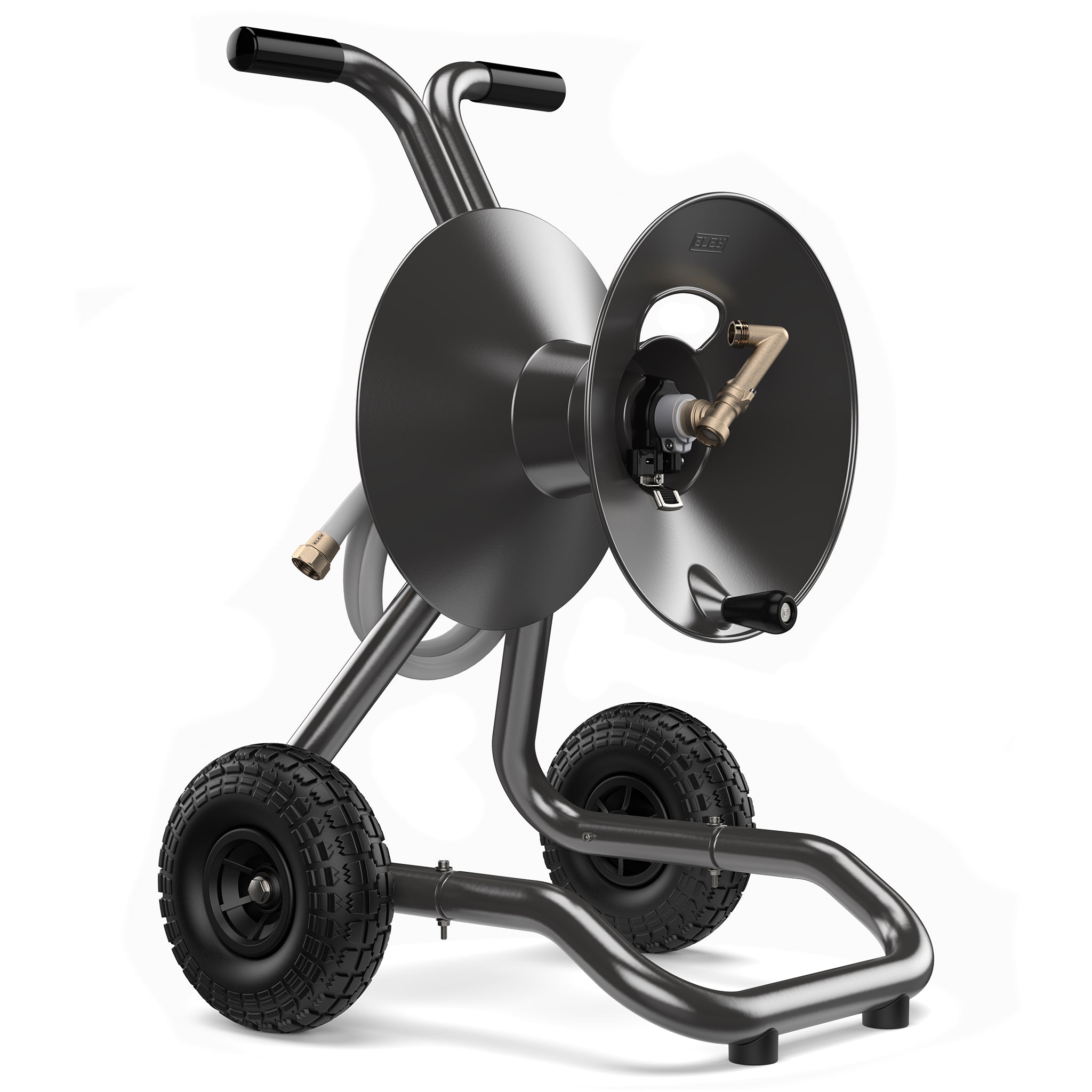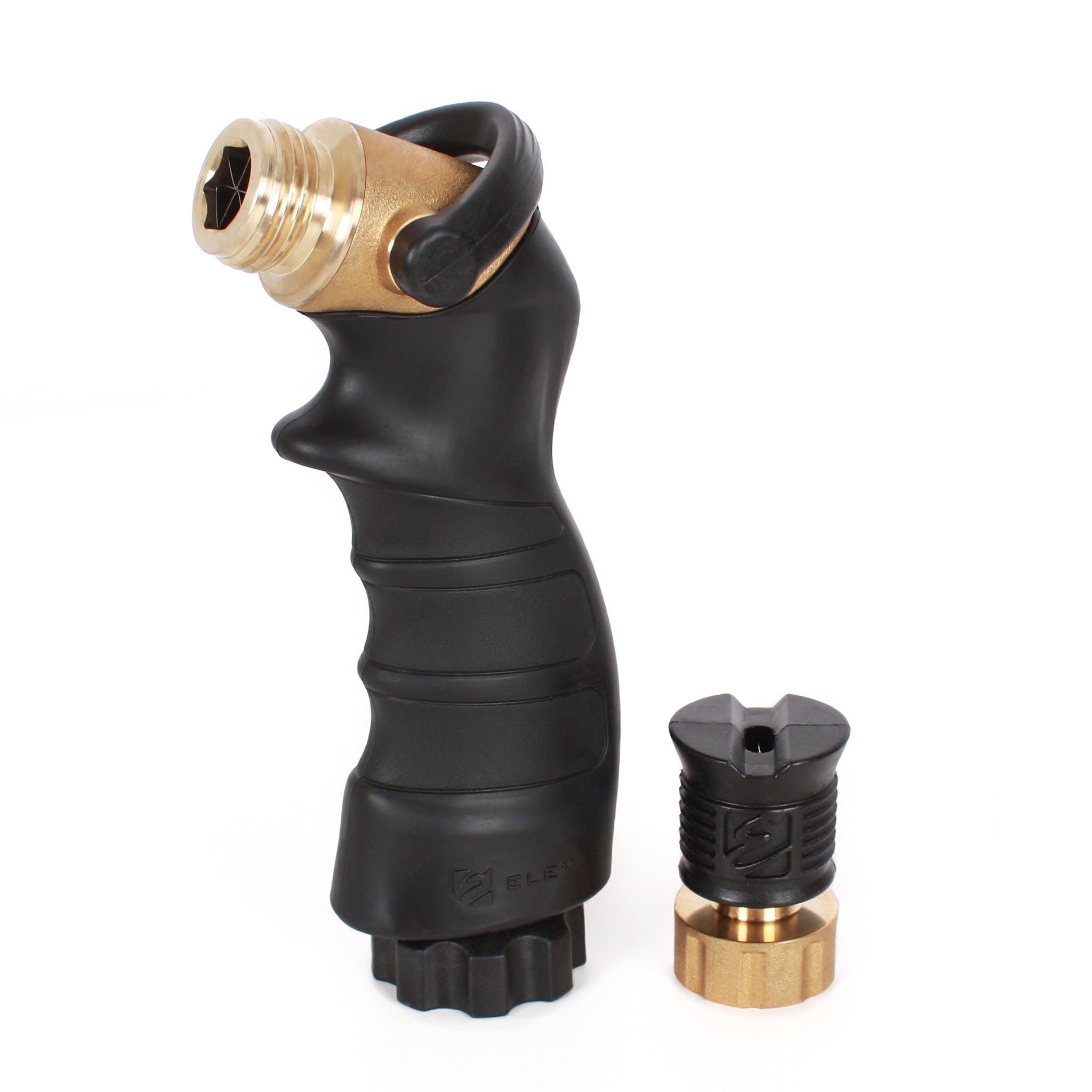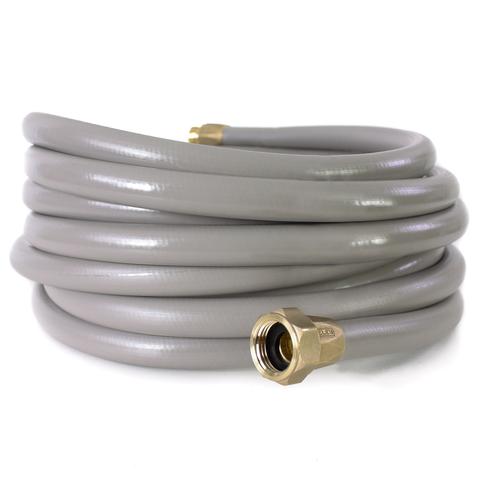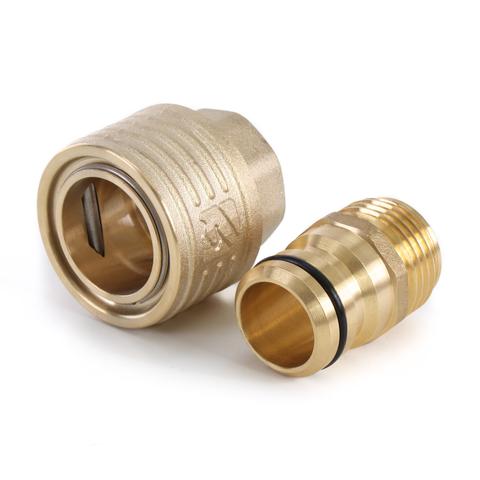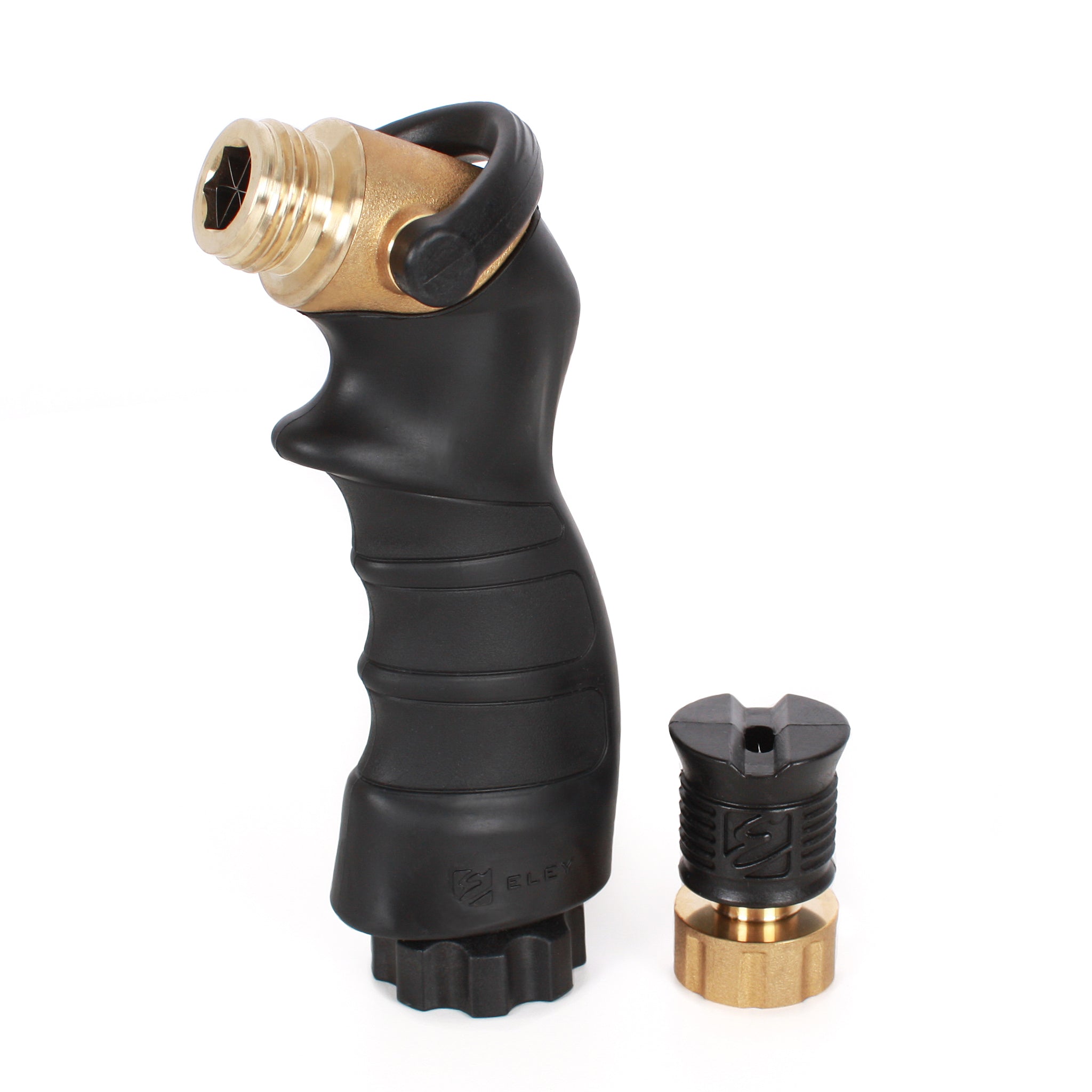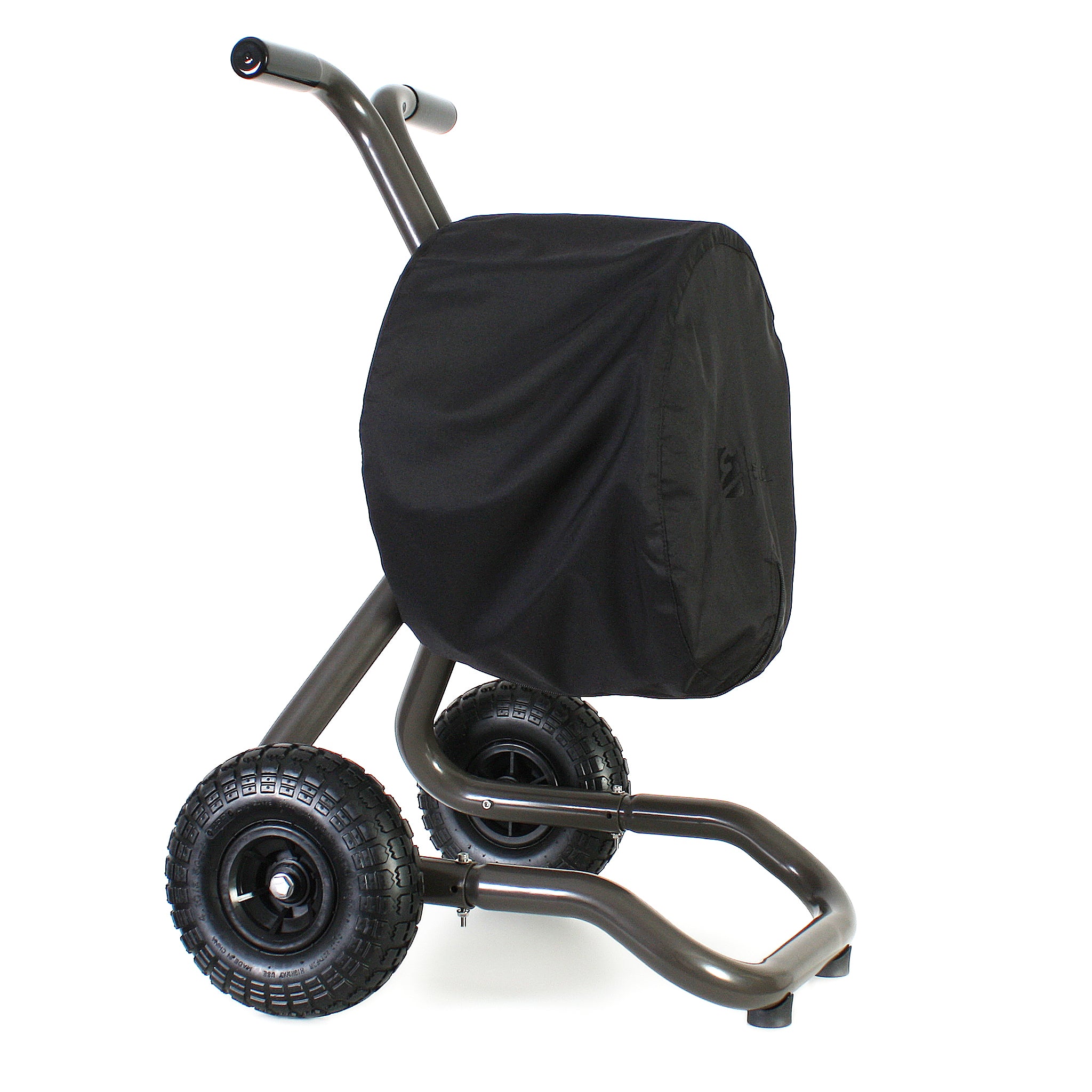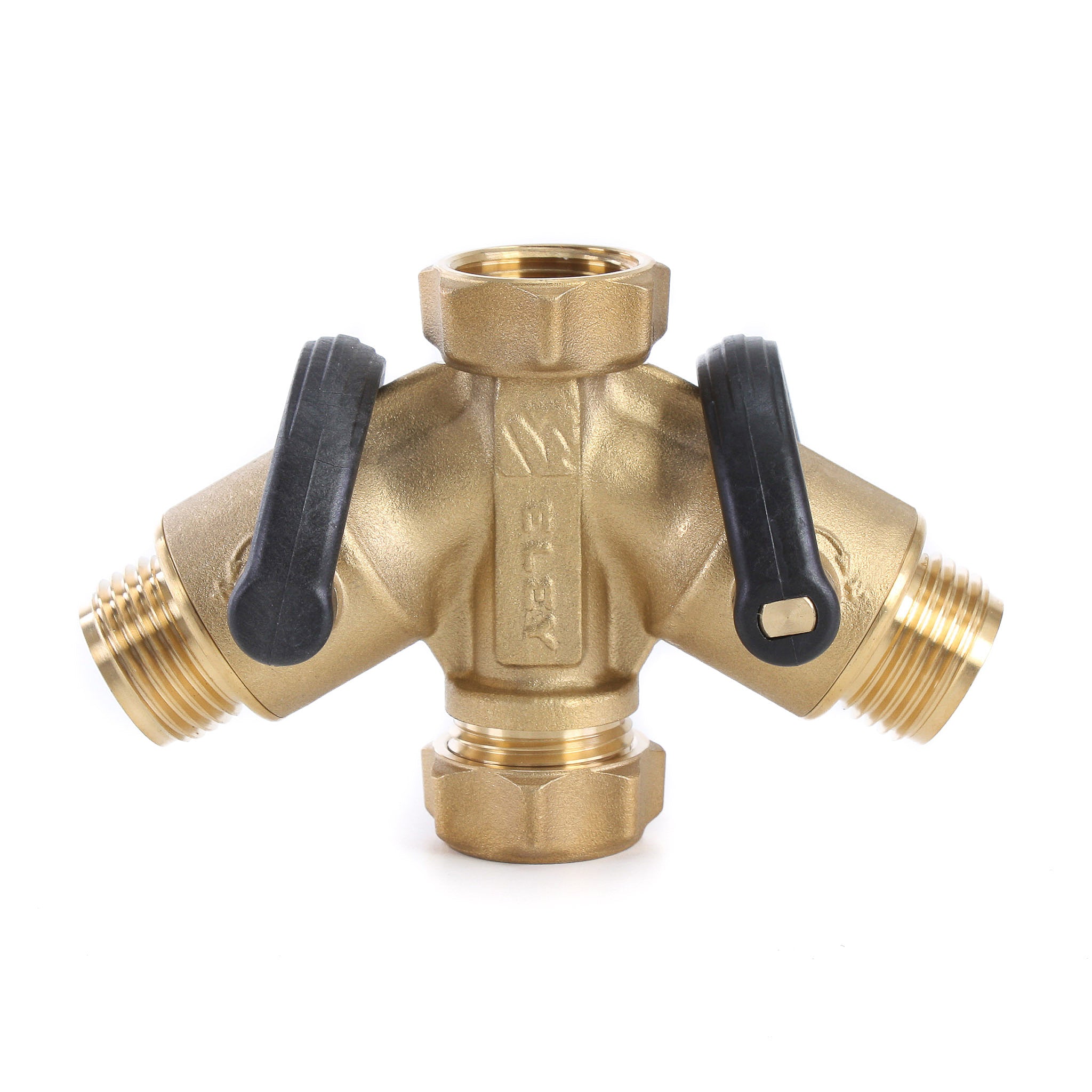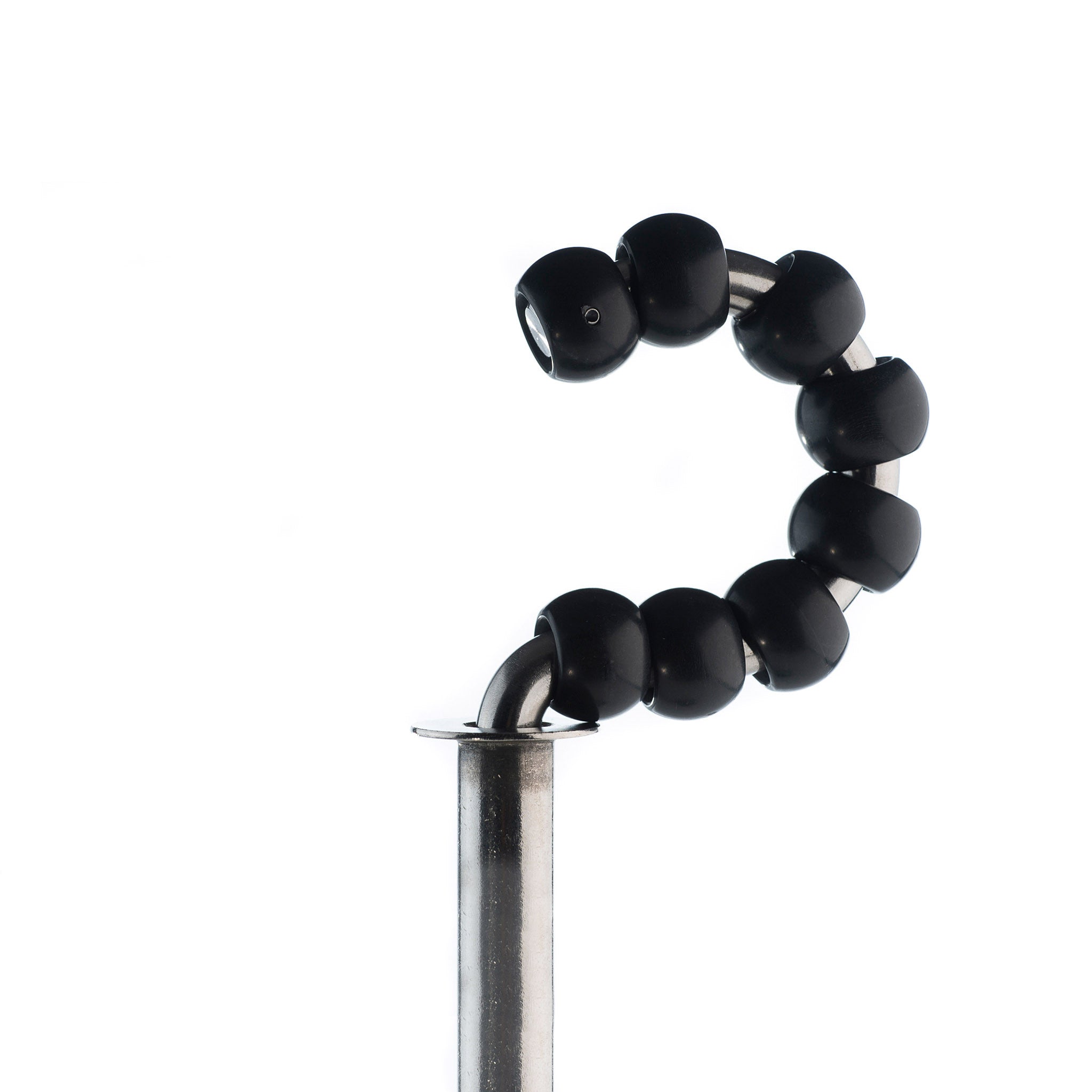A hose kink is the bane of any gardener and the Achilles heel of almost every garden hose. This common weakness has worked its way to the front of the complaint line in the mind of most garden hose users. And rightly so, it quickly prevents us from doing the task we set out to do, and it requires extra work to remedy. The kink-resistance of a garden hose is determined by what material and how it is produced.

MATERIALS
Kink-Memory (compression set)
Most garden hoses, worldwide, are produced with plasticized PVC, while some are made from rubber, and fewer, from polyurethane. These materials are all affected, to some degree, by a phenomenon called compression set[1]. In garden hose terminology, it's called kink-memory. A standard laboratory test[2] reveals what percent of the material does not recover from being compressed for a specified time and temperature. The smaller the percentage of compression set, the less kink-memory the material has. That is, the better the hose is at resisting a kink. Less kink-memory means a hose that is folded over with kinks for a few days will be less likely to kink again in that same spot.
The ability of a material to return quickly to its original shape, after a temporary deflection, is called its resilience. In other words, it indicates the speed of recovery, unlike the compression set, which shows the degree of recovery. This is an important attribute when it comes to a garden hose and its ability to resist kinking. The springiness that comes from a more resilient material allows a hose to resist compression when the hose is bent in a loop to the point of kinking. The hose with a highly resilient material will spring out of the loop rather than compress into a kink.
The hardness of the materials used to make garden hose affects its flexibility, which, in turn, affects its ability to resist kinks. Softer materials are used to make a hose more flexible. The thought being, the more flexible, the easier the hose is to use. But the trade-off comes in its ability to resist kinks. Softer materials fold easier and therefore are less kink resistant. All materials used to produce garden hoses come in varying degrees of hardness, so it is difficult to know by the type of material, whether it is going to be more kink-resistant or not. Just keep in mind, the more flexible the hose, the easier it may kink.
CONSTRUCTION
Garden hose materials aren't the only contributing factor to hose kinks. How a hose is made also affects how easily it kinks in the first place. Conventional garden hoses are made by extruding a round tube of flexible material in a continuous length. A reinforcing layer of the textile thread is then wrapped over the tube, like a compression sock. This resists the internal water pressure that would make the tube expand like a balloon. The textile thread layer is not very durable, so a protective cover layer is extruded over the tube and reinforcing layer to complete the garden hose.
Wall thickness
The inner tube, reinforcement, and cover layers combine to create a specific wall thickness and the outside diameter to a hose. While a thinner wall can make a hose lighter, less expensive, and more flexible, it can have a detrimental effect on kink resistance. The ratio between the wall thickness and the hose's outside diameter is called the "wall factor." This ratio calculates how easy a hose will kink. The thinner the hose wall, the easier a kink forms. For example, as a hose is bent, the material on the outside radius of the bend is stretched in tension and becomes thinner, while material at the inside radius is compressed and thickens. To balance these forces, the cross-section of the bent hose flattens and kinks. When the wall factor is correct (thicker concerning its diameter), there is more material to resist the tube's flattening.
Wall Concentricity
concentricity - the quality of having the same center (as circles inside one another)

Tight control over the wall concentricity is paramount to kink prevention. If a hose is produced without these controls, the wall can become thinner on one side of the tube. When a hose with this condition is bent, the thinner material will, depending on its location in the bend, compress or stretch easier, causing the hose to flatten and kink.
Reinforcement layer
There are two types of reinforcement patterns used in most garden hoses. Both do the job they are needed for, which is to support the inner tube against internal pressure. However, one is more susceptible to kinking.
Spiral Wrap
 A spiral wrap reinforcement is produced by wrapping several textile threads in one direction around the tube and an equal amount in the opposite direction. The overlapping strands provide flexibility but not much support when the hose is forced into a loop. This type of wrap is generally found on less expensive hoses because of its higher production rates. It is good at handling the pressure requirements for the garden hose but is more prone to kink.
A spiral wrap reinforcement is produced by wrapping several textile threads in one direction around the tube and an equal amount in the opposite direction. The overlapping strands provide flexibility but not much support when the hose is forced into a loop. This type of wrap is generally found on less expensive hoses because of its higher production rates. It is good at handling the pressure requirements for the garden hose but is more prone to kink.
Circular Knit
 A circular knit reinforcement uses several threads continuously interwoven around the inner tube in a series of interlocking loops, much like chain mail armor. The flexible links formed by the knitting provide more support when the hose is forced into a loop. Slower production rates tend to make these hoses more costly. Circular Knit is good at handling the pressure requirements for a garden hose and less prone to kink.
A circular knit reinforcement uses several threads continuously interwoven around the inner tube in a series of interlocking loops, much like chain mail armor. The flexible links formed by the knitting provide more support when the hose is forced into a loop. Slower production rates tend to make these hoses more costly. Circular Knit is good at handling the pressure requirements for a garden hose and less prone to kink.
Summary
Water hoses that are more kink-resistant, like the ELEY polyurethane garden hose, will have most, if not all, of the following traits.
- Low material compression set values that make them less likely to stay deformed if kinked.
- High material resiliency that will help them spring out of kink producing loops.
- More rigid materials that provide kink preventing support.
- Thicker walls that resist tension and compression during bending.
- Concentric walls that prevent weak or thin areas that are prone to kink.
- Circular knit reinforcement that provides strength and flexibility when bent.
Unfortunately, there isn't a standard test method used by manufacturers to measure the kink-resistance of garden hoses. However, there is a simple method you can use to test any garden hose. This method replicates the most common event that causes garden hoses to kink a simple loop.
- Pull out a 6-foot section of garden hose and create a 2-foot diameter loop in the center. The loop and hose should lay flat on the ground.
- With your left hand, hold the hose on the left side of the loop and, with the right hand, hold the hose on the right side of the loop.
- Keeping your hands and the hose on the ground, move your hands away from each other, so the loop of hose gets smaller and smaller.
Hoses that are more kink-resistant will tend to flip out of the looped position. A hose that is less kink-resistant will tend to collapse into a kink. 
Shop ELEY Polyurethane Garden Hoses to see all the other benefits, features and available lengths.
[1] https://www.sciencedirect.com/topics/engineering/compression-set

